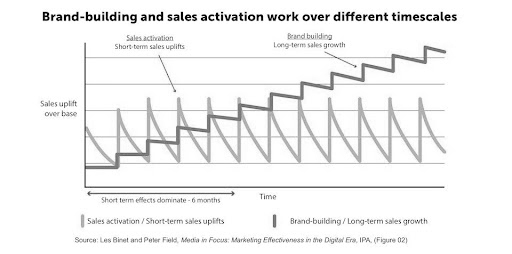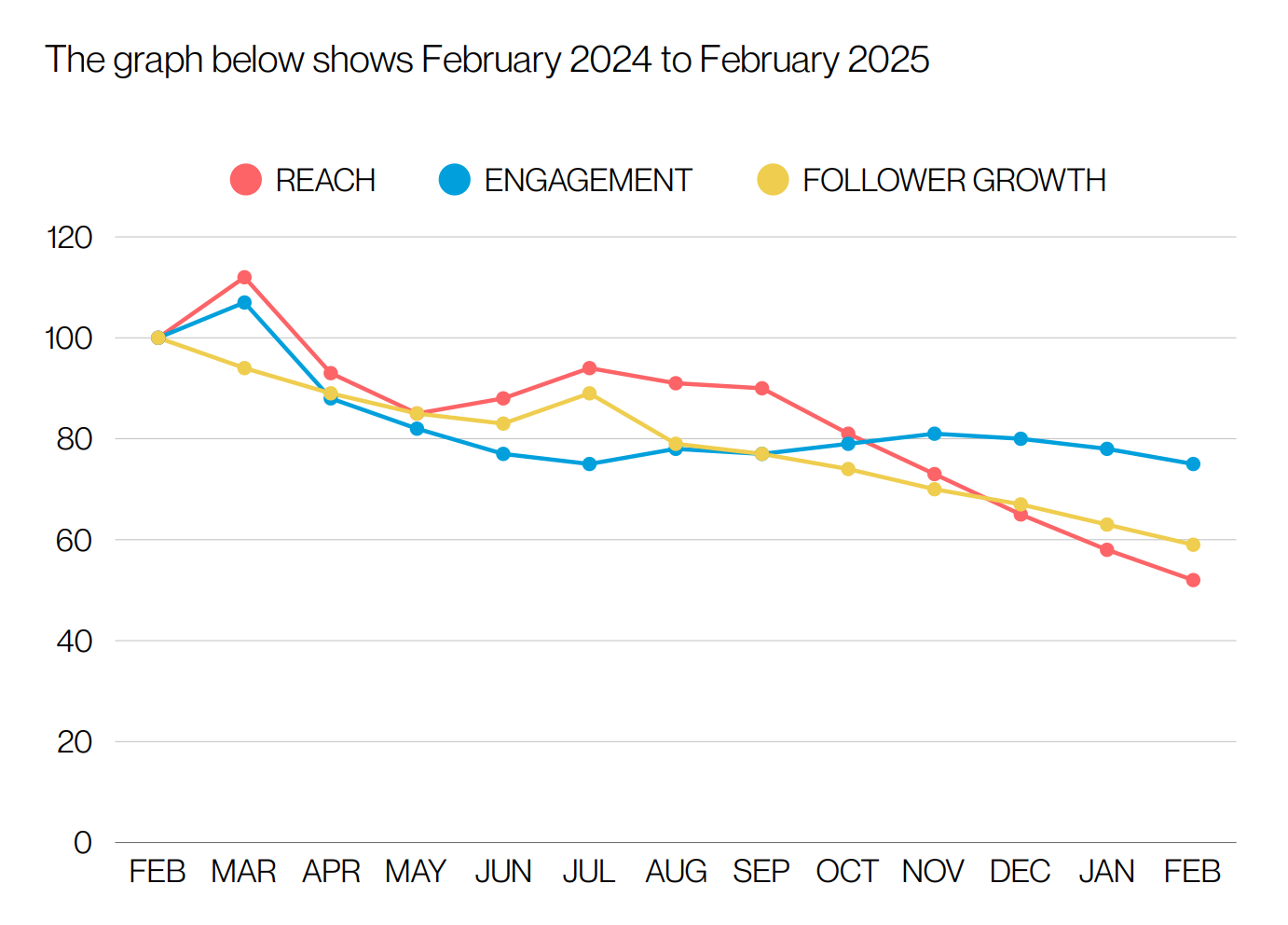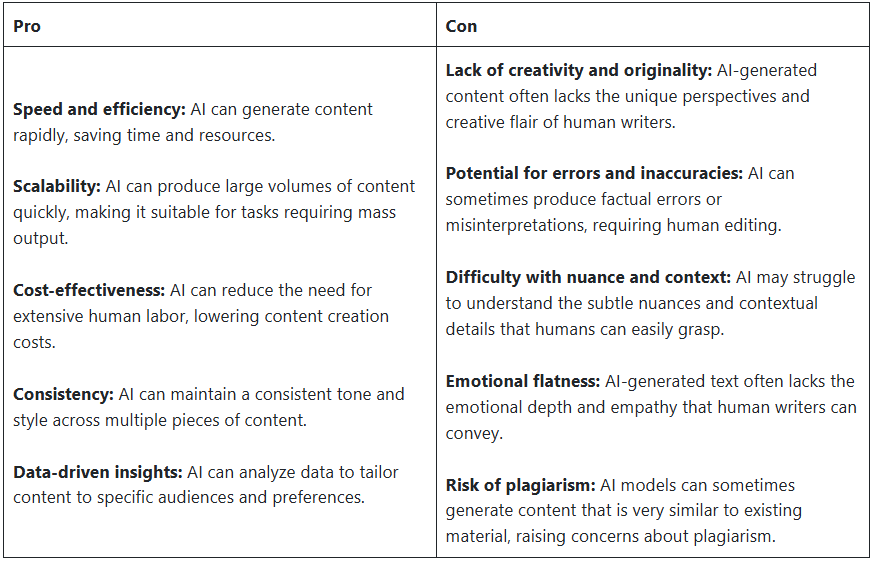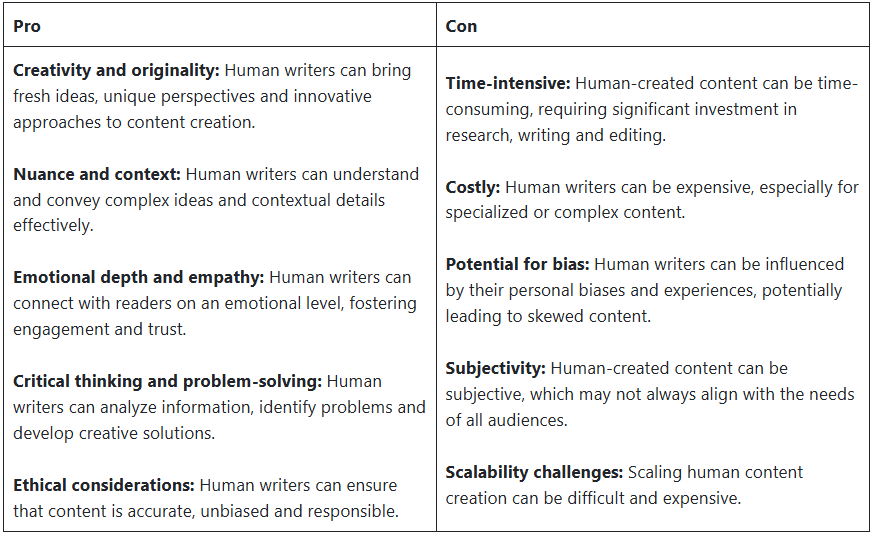
by Christina | Jun 26, 2025 | 2025, Blog
Over a decade ago, I joined my first adtech company after kicking off my career in the traditional advertising agency world. And for approximately that same amount of time, I’ve been writing bylines for executive thought leaders at a multitude of companies about three things:
- The cannibalization of the adtech industry
- The death of the cookie
- The impending AI boom
At a certain point, it all became white noise. The industry news equivalent of Bill Murray’s character waking up to “I’ve Got You, Babe” for the hundredth time in Groundhog Day. “Yes”, all of us marketers said to ourselves, “The cookie will die, AI will take our jobs, the industry will continue to consolidate until it forms a hulking monolith where creativity goes to die. In the meantime, how can I prove the quantitative value of our latest brand awareness campaign?”
And that very line of thinking, dear reader, is the reason marketing is not dead (neither, incidentally, is the cookie). Because while we balance the simultaneously ever-changing and yet ever-static news of our industry, we also still have work to do. As Hitchhiker’s Guide to the Galaxy reminds us, we really only have one job amidst the chaos: Don’t Panic. And ideally, we can take that one step further and not only resist panic (or worse, indifference), but also embrace curiosity.
We’ve woken up in Punxsutawney again. How will we change things up?
Bust that Black Box Wide Open
Succeeding in today’s adtech landscape isn’t necessarily about being the best. It’s about innovating at the fastest pace (as a wise CEO once told me, the fast eat the slow), and being willing to put your assumptions to the test with a truly objective eye and be radically transparent about what you find. Once upon a time, it was acceptable for adtech companies to operate in a black box, waving clients off with a pat on the head and a “you don’t have to worry about that”. But now, with AI democratizing analytics at breakneck speed, the black box needs to be replaced with a crystal clear swimming pool.
Go ahead, invite your customers to dive right on into the data. Let them play with it, understand it, ask questions about it. This is a critical shift away from the profoundly overused “proprietary” workings of organizations just a few short years ago. Successful organizations, and successful marketers, should now hang their hats not on secrets kept, but on knowledge shared.
This is really just a natural progression of the transparency that came for consumers with GDPR and CCPA. While we have been regulated into greater transparency for the ultimate audience of our media, there is still a substantial amount of gatekeeping between adtech companies and the organizations they serve.
The best, easiest, and most criminally back-burnered way to stand out and create greater transparency is with a Customer Advisory Board. Adtech is no longer standing on the mountain with a megaphone yelling down to others at base camp what it’s going to be doing. This is a serious two-way conversation, and organizations that invite that conversation with their customers, rather than ignore it, will come out on top.
So, talk to the folks who love your product, the folks who hate it, the folks who gave you that criminal “6” rating on your CSAT. Invite them into a conversation, actually utilize the amazing product marketers you probably just have making decks and one-pagers right now, and build a program that breaks you out of the monolith and puts you on the map as the rarest of all things: an adtech company that cares what its customers have to say.
Balance the Long and Short of It
Another thing that never changed in my entire adtech life? The pressure to balance short-term quarterly goals with long-term, sustainable company growth. On the one hand, as Groundhog Day reminds us, nothing that you do in a single day matters if the day is simply doomed to repeat itself again. Hello, Sisyphus.
This is how it can often feel when launching a new program without any guarantee that you’ll be able to run it long enough to produce results. “This webinar didn’t work” is something I often heard, despite the reality that a single webinar never works. An ongoing webinar program does. Yet it can be hard to see the forest through the trees when the arguments from one side of the house for short-term needs are concrete, and the value of longer-term programs can come across as theoretical.
So, what’s a modern marketer to do? Hedge your bets, and back your opinions with data. The best advances always come from a test and learn approach that allows you to share progress (whether good or bad) at a consistent cadence and demonstrate the changes you’re making along the way. Sprints of two weeks to one month for demand generation activities gave me the boost I needed toward short-term goals while also buying me the breathing room to focus on the long game.
As we all know, the best laid strategy will always be better received with objective data to back it up. My personal favorite marketing chart [below] details the manner in which sales and demand-focused activations can lead to a shorter term boost in sales, but ultimately it is brand awareness that leads to sustainable success over 12+ months.
If I had a nickel for every time this chart appeared in a deck and helped me get more budget for experimentation and a test and learn approach, I would have at least enough nickels to buy a coffee for the person who originally shared it with me.

The Day After Groundhog Day
While there is no guarantee of escaping the certain inevitable loops of any industry, there is always a path to innovation, experimentation and improvement. When you pair radical transparency across your customer base with a data-driven, test-and-learn approach that equally balances long and short term internal goals, you’ll find yourself in solid fighting shape to survive the cannibalization of adtech, the impending coup of our AI overlords, and – if it ever actually were to happen – the death of the cookie.
Rachel Peterson is a former marketing executive specializing in enterprise software with a track record of scaling multiple B2B companies to $100M+ in ARR. She now works as an author and consultant.

by Christina | Jun 13, 2025 | 2025, ebooks
Over the last 30 days, we tested short-form videos vs. traditional blog posts on LinkedIn—tracking everything from impressions and engagement to profile views and website visits.
Key Takeaways:
👀 Engagement was up 290%, and impressions rose 408%, mostly thanks to video.
📽️ Videos were 5x more likely to be shared and received more reactions, but blogs drove more profile views and comments.
🌍 90%+ of reach came from 1st connections—raising questions about LinkedIn’s promise to expand visibility. More on this in the full report below.
Paid promotion and Premium didn’t yield meaningful ROI (CTR was just 0.13%).
The Bottom Line: Video is trending, but don’t look for it to move the needle on business impact. It is an awareness tool to inform your existing audience.
The key insight: LinkedIn’s algorithm favors content consumers more than creators—the future of your feed will be more content from less creators. For creators, it will be very difficult to grow your audience outside your existing network…even using paid promotions.
To learn more download our e-book.

by Christina | Jun 10, 2025 | 2025, Tech Trends
For the past month we have tested the performance of short form videos versus traditional blogs posted on LinkedIn.
Why do it?
Two decades ago, I started blogging. Back then, keeping a post under 2,000 words felt like a constraint. (I was a management consultant — so yes, I used a lot of words.)
A couple of years later I began writing for Forbes which trimmed my posts to 1,200 words. Then, while writing for The Drum,down even further to 800. As attention spans shrank, so did my word count.
Fast forward to today: content is everywhere, AI tools are flooding our feeds, and the pressure to stand out is greater than ever. So I find myself asking: Should I still write, or do I shift to short-form video?
The Experiment
To measure the effectiveness of each, we created three tiers of key metrics. Tier one being the most important, tier three being the least.
● Tier 1 – form fills on our website or DMs on Linkedin
● Tier 2 – profile views or website visits, views/read time of the content, new followers
● Tier 3 – reach, engagement (impressions, engagement, shares)
To track performance, we used Linkedin Analytics (post performance), Hubspot (form fills), GA4 (web performance), Warmly (web visits), and Looker Studio (blog performance). The time period included all posts and performance for the last 90 days (March 1 to May 30th) allowing us to have enough data to measure the performance before and after.
The top 8 viewed posts of the last 90 days were evenly distributed between video and blog content posted in the last 30 days as part of our test. The first video was released was the top viewed post, with the remaining three videos making up the 3rd, 7th and 8th most popular.
Correspondingly, blogs ranked 2nd, 4th, 5th and 6th, were almost of perfect distribution to compare, with both having a median between 4 to 5.
Overall performance for the last 90 days on LinkedIn, compared to the previous period, experienced a 20% lift in content performance (impressions) and a 42% increase in engagement. Even more striking is the 28 days compared to the previous period, which produced a 408% increase in impressions, and a 290% increase in engagement.
Given the Tier 3 performance, it might be logical to believe that increases will be seen in the other tiers.
The Results
Before I jump in, it’s important to recognize how LinkedIn counts impressions and views of videos.
An “impression” is registered every time your post appears in someone’s feed. It reflects overall visibility, not necessarily engagement, or that it has been seen/read. Think of it as a billboard along a road. The cars pass by but may or may not glance at it.
LinkedIn’s algorithm, based on the content and responses to it, then decides to distribute more broadly…or not.
A video view is counted when someone watches for at least 2 continuous seconds (down from 6 seconds in 2023), either via autoplay or a manual click. In this case, we are using autoplay.
To dig deeper into evaluating the performance we downloaded Richard Van der Blom’s Algorithm Insights Report 2025 for LinkedIn metrics and benchmarks. We tried to download LinkedIn’ Benchmarks for Brand Awareness, but the link is broken on the LinkedIn for Marketers page…I’ll let you draw your own conclusions.
Okay, now for the results. I’ll start with “members reached” defined as the number of distinct members and pages that saw the post. Caveat, this number is an estimate and does not include repeat displays. I’ll begin with Tier 3 metrics and work my way to Tier 1.
- Reach – no real difference between videos (60%) and blogs (57%).
- Consumption (read or watched) – video (70%) outperformed blogs (12%) but that number is misleading. The videos were set to autoplay and a view “counts”, even if it’s for only 2 seconds.
- View/read times – this becomes a more important metric given the prior statement and is closer to the truth. Videos still outperformed (35% to 20%), but this is an average. For video, it’s total viewed time divided by views, for blogs it’s average read time divided by total read time (eg. 1 min read time on a blog that is a 5 mins read).
- Reactions (likes, etc.) – video outperformed content significantly (almost 2 to 1), but that is skewered by video #1 which has nearly half of all the video reactions.
- Comments – viewers were more likely to comment on blogs, by 52% .
- Reposts – viewers were 5 times more likely to share a video.
- Profile views – blogs were twice as likely to generate a profile view. But, when compared to the previous period, my profile views over the last 28 days decreased.
- Audience growth – you might assume given the previous statement about the 90 day overall improvement in performance would net an increase in my audience, but unfortunately, that was not the case. There was no change. Additionally, most of the views, (almost 90%+) came from my first connections.
- Web visits and/or visits to the Linkedin Company page – recognized no change, and visits to our corporate page actually declined by 18% during the period.
- Tier 1 metrics – neither format produced a form fill or a DM.
Interestingly enough during this test period, a post on ABM written by Ruth Stevens, mentioned an article I had written years ago drove more traffic to our site in one day than anything else we did on LinkedIn the past 90 days..
Learnings
How you view these results really depends on how you view LinkedIn as a channel and your desired goals…a la the key metrics listed. I also came away with as many questions as I did answers.
For me, blogs have a slight advantage over short form videos (for now), purely from the ease of creating them. Additionally, based on the performance of the comments and profile views, I feel like viewers were more invested in the content.
Now for some caveats… I’m making this comment as a Gen X twenty-year blogger with a mature senior executive audience. This brings up an interesting challenge we faced, and soon I’ll be creating another post going into more detail.
Trying to reach a new audience, we tested upgrading my account to Premium and using paid ads on our corporate site, hoping to boost video views for the last two weeks. Neither produced the results we hoped for, and/or was promised by LinkedIn.
LinkedIn Premium claims it will “expand your network and increase visibility.” We saw no evidence of that being true, as I mentioned 90%+ of the reactions came from 1st connections. Paid ads dramatically increased impressions (a relatively meaningless Tier 3 metric) but performed poorly, producing a 0.13% CTR with no conversions.
This raises a question on the value of the 800 lb gorilla of B2B channels, LinkedIn. LinkedIn has changed its algorithms to bring you more content from the creators you interact with, which somewhat explains the concentration of my audience.
The key insight from this experiment, at least for me, is that LinkedIn’s algorithms are geared towards the content consumer and not the creator.
The change in their algorithm means you are more likely to see more content from one creator than a vast group of creators. For example, you are 60% more likely to see a post from someone that you have interacted with on your feed. LinkedIn, like other social media platforms, is changing what you see in real time as you interact with what’s on your feed.
As a result, as pointed out by the Algorithm Report, reach, engagement and follower growth have declined dramatically since last year.

Source: Just Connecting™ and Richard van der Blom
The bottom line – the performance of short form videos may have been handicapped because I wasn’t able to reach an audience that prefers that content format.
LinkedIn lives on creator content and that content, according to the report, is quickly moving to video (an increase of 23% in 2024 over 2023). What the report doesn’t show, nor could we, is that it is any more effective than anything else.
If you’re searching for an ROI for the business impact of any type of content posted on LinkedIn, it may not be the format but rather the channel that is the problem.
Now let’s see if anyone reads this content…don’t make me do another video!
Special thanks to Ben Armstrong at 9Mile media for the creation of the videos and Naheed Somji, our social media guru for his support and advice.

by Christina | May 7, 2025 | 2025
Your best copy might sound like AI to clients. See why creative value is under pressure and what it means for agencies.
AI is changing how clients view creative work. Even the best human efforts are starting to be questioned — not for quality, but for authenticity. I recently saw this firsthand.
The feedback I was not expecting
Below is recent feedback from a client on some content we created.
“I do have a piece of feedback for them. I’m not sure which AI writing tool they’re using to create these, but they may want to take a second pass… a lot of these pieces of copy are clearly first pass AI generations…”
The problem is that our copywriter didn’t use AI and would be offended by the feedback. He’s an award-winning creative with a big agency background. As you might expect, he’s vehemently opposed to using generative AI.
Where is the feedback coming from? It’s from a company whose marketing department strongly embraces generative AI for content creation. I guess they assume their agency is using it as well.
That will be a significant issue if you are on the agency side. Perhaps it already is, and I’m just now experiencing it. Our copywriter is very talented and has a lot of great experience. As a result, he is not inexpensive.
He warrants the rate he receives, now threatened by clients who will discount the value, assuming a tool is responsible for his output.
As more clients adopt generative AI tools for marketing, questions will arise regarding the outputs and cost of agency services, particularly creative agencies.
In this example, it’s content. However, the same scenario could apply to any creative service: creative concepting, AI image generation, media planning, AI audience segmentation, etc. AI is everywhere.
The real problem behind the perception
The reality of AI tools is that they are handy and efficient. As a result, we face the challenge of protecting the craftsmanship of our creative resources while leveraging the tools’ value.
I’ve always believed that good copy or content is an art. But what happens if no one appreciates the art? What will be its value?
Many creatives use AI tools for ideation, content refinement, editing, etc. However, to date, I’ve not seen any evidence that AI-generated or modified outputs perform any better than what humans have created in the past.
Dig deeper: What AI means for the future of agency-brand partnerships
AI vs. human-generated content
Maybe it’s not a choice of “either-or,” but knowing the advantages and disadvantages of each approach (see below) and when to use them situationally to our advantage.
AI-generated content

Human-generated content

Dig deeper: https://martech.org/riding-the-ai-tsunami-harnessing-creativity-and-efficiency-in-the-digital-age/
The blended future of creativity
After pulling this together, I realized where the client feedback came from in our latest content round. Over the last few months, we have been hand-crafting emails for announcements, follow-up emails to events and other marketing outreach activities.
This most recent round, and what generated the feedback, was a change in our approach. We profiled the personalities of the target audience and found that the most dominant personality type was one that prefers concise, to-the-point, no-nonsense content.
We removed the “emotional depth and empathy” mentioned as a strength of human-generated content. As a result, the content had an “emotional flatness,” making it sound like a machine wrote it. The blending of machine and man is not going away. The only real question is, will it improve our results?
Dig deeper: The AI-powered marketer’s roadmap to the future of content

by Christina | Apr 3, 2025 | 2025, Business Trends
In today’s economic climate, losing a customer isn’t just disappointing—it’s potentially devastating. Yet many businesses miss the early warning signals until it’s too late.
I’m experiencing this firsthand with one of our vendors right now. The relationship is deteriorating, and I can see exactly where things went wrong. Don’t let this happen to your business. Here are the critical warning signs to recognize and address immediately:
1. Service Deterioration
When service quality stumbles at the start and never recovers—or worse, begins strong but steadily declines—customers notice immediately. This often stems from internal turnover or stretched resources, but regardless of the cause, clients can sense when they’re no longer a priority. Remember: consistency is as important as quality.
2. Communication Breakdown
Poor communication compounds service issues and accelerates relationship decline. Worst of all is attempting to cover problems with transparent excuses—this damages trust far more than the original issue. The solution is straightforward but crucial: honest, proactive communication can salvage even troubled relationships.
3. Eroding Trust
If your customer begins questioning your expertise or experience, you’re facing a five-alarm fire. Once trust evaporates, recovery becomes exponentially more difficult. This warning sign demands immediate intervention—schedule a candid conversation about expectations and reset the relationship before it’s unsalvageable.
4. Subpar Deliverables
Sometimes the sales team sets impossible expectations, creating a delivery gap from day one. Other times, businesses overreach beyond their core competencies. Either way, consistently disappointing deliverables will end relationships. Focus on excelling at what you do best rather than attempting to be everything to everyone.
5. The Toxic Team Member
One underperforming team member can poison an entire customer relationship. Don’t retain problematic employees simply to fill a position—they consume disproportionate management resources while actively damaging customer relationships. Make the difficult staffing decisions before they cost you valuable clients.
6. The Preemptive Reset
Sometimes the boldest move is acknowledging when you can’t meet expectations. Proactively addressing shortcomings—even suggesting a pause in the relationship—demonstrates integrity and preserves future possibilities. A temporary revenue hit is preferable to a permanently damaged reputation.
The Path Forward
Customers don’t make switching decisions lightly. When a vendor is deeply integrated into operations or fulfills a critical function, transition costs are substantial. This reality often creates a window for relationship recovery—but only if you recognize the warning signs and act decisively.
Use this opportunity to genuinely improve your service delivery. Not only might you save the relationship, but you’ll also remove the constant weight of knowing you’re underserving a client—a burden no business owner should carry.















